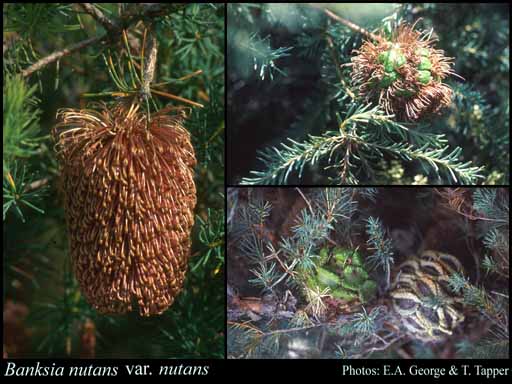- Conservation Code
- Not threatened
- Naturalised Status
- Native to Western Australia
- Name Status
- Current
Non-lignotuberous shrub, 0.3-1.3 m high. Fl. pink-purple/purple-brown, Nov to Dec or Jan to Feb. White or grey sand, sometimes over gravel. Coastal consolidated dunes.

Scientific Description
Shrubs, 0.40-1 m high; branchlets glabrous. Leaves petiolate, alternate, 8-25 mm long, 0.7-1.5 mm wide, glabrous; petiole 1-3 mm long; lamina flat, more or less the same width throughout, entire, the margins revolute. Inflorescences pubescent (with soft, straight, erect hairs), yellow, pink or brown; innermost bracts 3-4 mm long, hairy. Perianth 22-25 mm long, hairy, all over, limb apex pubescent (with soft, straight, erect hairs), without awns; pistil 26-30 mm long, hooked, style glabrous. Follicles glabrous, elliptic or oblong, 18-40 mm long. Flowers in January, February, November or December. Occurs in the Eremaean (ER) or South-west (SW) Botanical Province(s), in the Coolgardie (COO), Jarrah Forest (JF), Mallee (MAL) or Esperance Plains (ESP) IBRA subregion(s).
Distribution
- IBRA Regions
- Coolgardie, Esperance Plains, Jarrah Forest, Mallee.
- IBRA Subregions
- Eastern Goldfield, Eastern Mallee, Fitzgerald, Recherche, Southern Jarrah Forest.
- IMCRA Regions
- WA South Coast.
- Local Government Areas (LGAs)
- Albany, Dundas, Esperance, Jerramungup, Ravensthorpe.